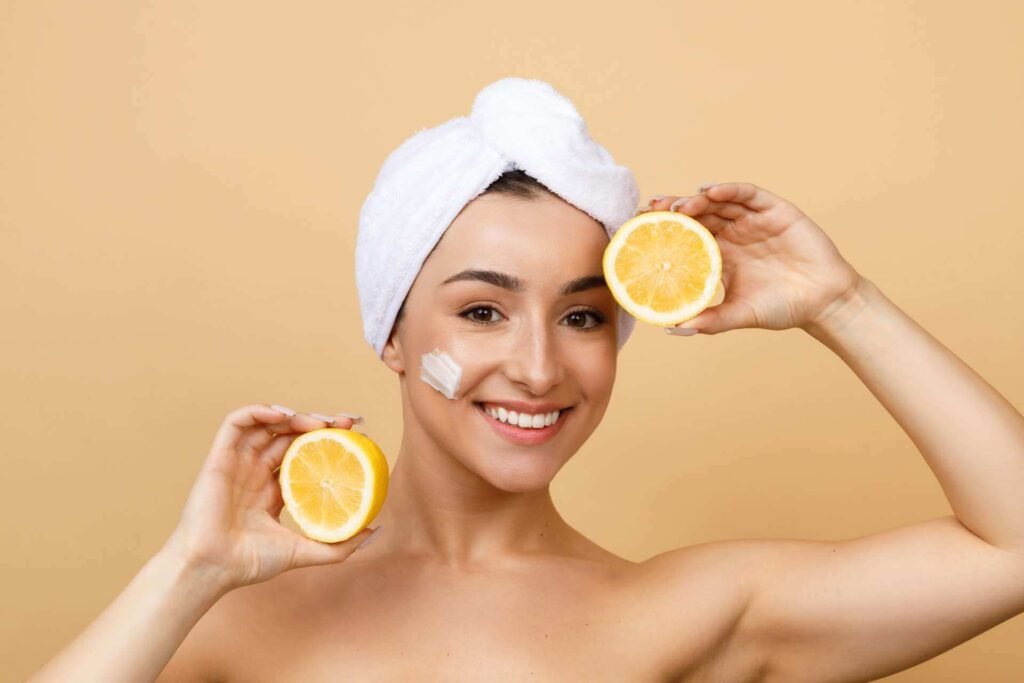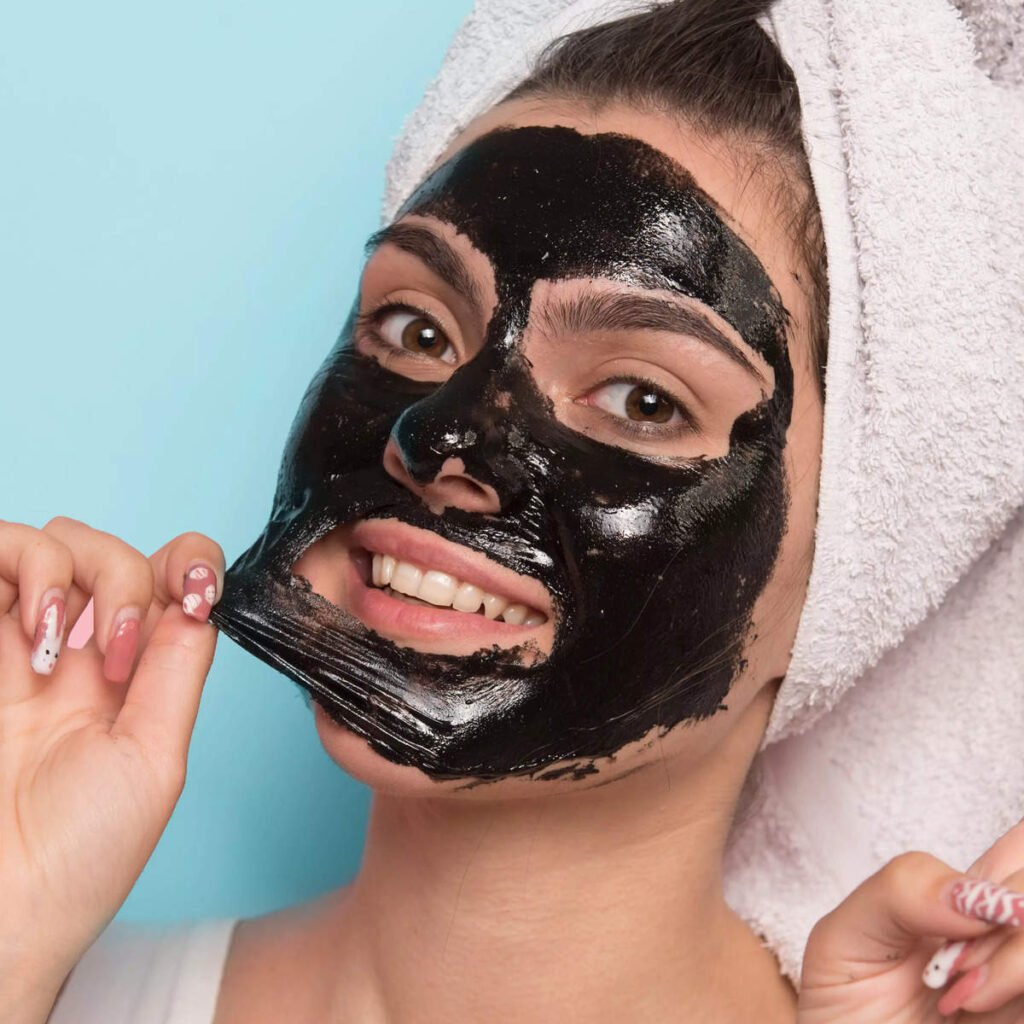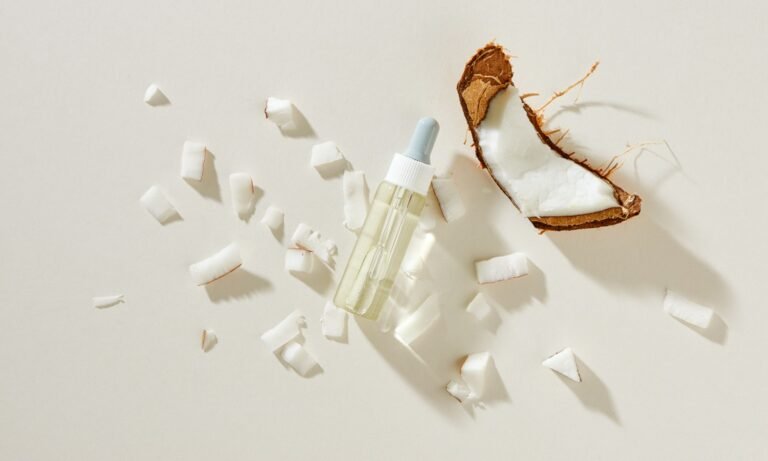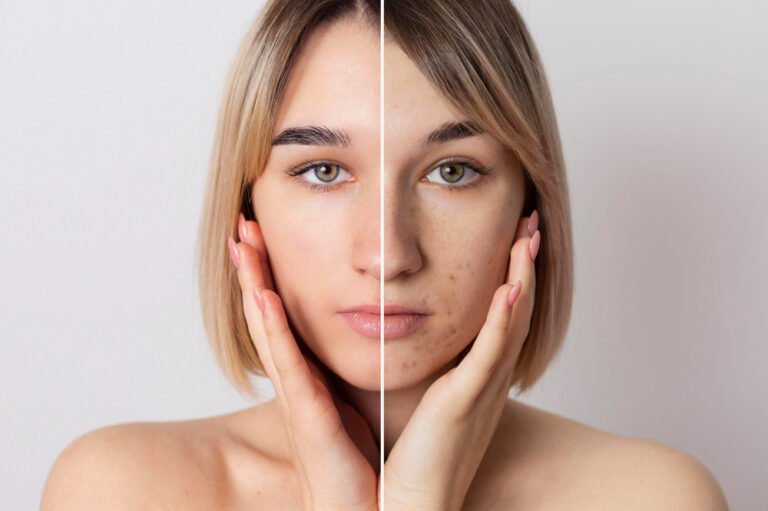Best Ways On How To Get Spotless Skin Naturally At Home
To get spotless skin naturally at home, cleanse and exfoliate regularly, and use natural ingredients like honey and aloe vera. Maintain a healthy diet and stay hydrated for optimal skin health.
Achieving spotless skin doesn’t require expensive treatments or products. Natural remedies can work wonders when incorporated into your daily routine.
Ingredients like honey, aloe vera, and turmeric have antibacterial and anti-inflammatory properties that help keep your skin clear. Regular cleansing and gentle exfoliation remove impurities and dead skin cells, promoting a radiant complexion.
Drinking plenty of water and eating a balanced diet of fruits and vegetables also contribute to glowing skin. By adopting these simple yet effective habits, you can enjoy a flawless, healthy complexion right from the comfort of your home.

Understanding Your Skin
Understanding your skin is the best way to get spotless skin naturally at home. Knowing your skin type and concerns helps you choose the right remedies. Each skin type needs different care, and knowing this will help you get the best results.
Let’s dive into how to identify your skin type and determine your skin concerns.
Identifying Your Skin Type
First, find out what type of skin you have. There are four main skin types: normal, oily, dry, and combination. Each type has specific characteristics.
- Normal Skin: Not too oily or dry. Few imperfections. No severe sensitivity. Pores are barely visible.
- Oily Skin: Shiny appearance. Enlarged pores. Prone to acne and blackheads.
- Dry Skin: Rough texture. Flaky or scaly patches. Less elasticity.
- Combination Skin is oily in some areas and dry in others. It is commonly oily in the T-zone (forehead, nose, and chin).
To identify your skin type, do this simple test:
- Wash your face with a gentle cleanser. Pat dry.
- Wait for an hour without applying any products.
- Observe your skin. Use tissue paper in different areas to check for oil.
If the tissue shows oil, you have oily skin. If it’s dry and tight, you have dry skin. If only the T-zone is oily, you have combination skin. If it feels balanced, you have normal skin.

Determining Your Skin Concerns
Understanding your skin concerns helps address issues effectively. Common concerns include acne, pigmentation, aging, and sensitivity.
- Acne: Red, inflamed pimples. Blackheads and whiteheads. Caused by clogged pores and bacteria.
- Pigmentation: Dark spots or patches. Uneven skin tone. Caused by sun exposure or hormonal changes.
- Aging: Fine lines and wrinkles. Loss of elasticity. Caused by aging and sun damage.
- Sensitivity: Redness, itching, and burning. Reacts to products. Needs gentle care.
To determine your skin concerns, examine your skin closely:
- Use a mirror in good lighting.
- Note any irregularities.
- Consider how your skin reacts to products.
Understanding both your skin type and concerns lets you choose the right natural remedies. This knowledge is key to achieving spotless skin at home.
Eating For Healthy Skin
Achieving spotless skin naturally at home starts with what you eat. Your diet can significantly impact your skin’s health and appearance. Eating for healthy skin involves consuming foods that nourish your body from the inside out.

You can promote clear and radiant skin by incorporating nutrient-rich foods and avoiding harmful ones.
Foods To Eat For Clear Skin
To get clear skin, focus on eating foods that are rich in vitamins, minerals, and antioxidants. These nutrients help to reduce inflammation, fight free radicals, and support overall skin health.
Here are some top foods to include in your diet:
- Fruits and Vegetables: Brightly colored fruits and vegetables, such as berries, oranges, spinach, and carrots, are packed with vitamins A, C, and E.
- Healthy Fats: Foods like avocados, nuts, seeds, and olive oil provide essential fatty acids that keep your skin hydrated and supple.
- Lean Proteins: Fish, chicken, and legumes are excellent sources of protein that help repair and regenerate skin cells.
- Whole Grains: Oats, brown rice, and quinoa are rich in fiber and nutrients that support overall skin health.
- Green Tea: This beverage contains antioxidants that help protect your skin from damage and reduce inflammation.
| Food | Benefit |
|---|---|
| Blueberries | High in antioxidants that fight free radicals. |
| Sweet Potatoes | Rich in beta-carotene, which converts to vitamin A. |
| Salmon | Contains omega-3 fatty acids that reduce inflammation. |
| Walnuts | Provide healthy fats and vitamin E. |
Foods To Avoid For Healthy Skin
Certain foods can trigger inflammation, increase oil production, and worsen skin conditions like acne. To maintain healthy skin, avoid these foods:
- Processed Foods: Foods high in sugar and unhealthy fats, such as chips, cookies, and fast food, can lead to breakouts and dull skin.
- Dairy Products: Some people find that dairy can cause acne flare-ups due to hormones present in milk.
- Refined Carbohydrates: White bread, pasta, and sugary cereals can spike blood sugar levels, increasing oil production and acne.
- Alcohol: Excessive drinking can dehydrate your skin and make it more prone to wrinkles and irritation.
- Salty Snacks: Too much salt can cause water retention, leading to puffiness and bloating in the skin.
Here’s a quick reference table for foods to avoid:
| Food | Reason |
|---|---|
| Soda | High in sugar, leading to inflammation. |
| Fried Foods | Contain unhealthy fats that can clog pores. |
| White Bread | High glycemic index, causing blood sugar spikes. |
| Ice Cream | Dairy and sugar content can trigger acne. |
Cleansing Your Skin
Achieving spotless skin naturally at home starts with an essential step: cleansing. Proper cleansing removes dirt, oil, and impurities, keeping your skin fresh and radiant. Let’s explore the best ways to cleanse your skin effectively.

Choosing The Right Cleanser
Choosing the right cleanser is crucial for maintaining healthy, spotless skin. Here are some tips to help you select the perfect cleanser:
- Know Your Skin Type: Determine if your skin is oily, dry, combination, or sensitive. This will guide you in picking the right product.
- Ingredients Matter: Look for natural ingredients like aloe vera, chamomile, and green tea. Avoid harsh chemicals like sulfates and parabens.
- Formulation: Cleansers come in various forms, such as gels, creams, foams, and oils. Choose a formulation that suits your skin type.
- pH Balance: A good cleanser should have a pH level close to your skin’s natural pH (around 5.5).
Here’s a quick reference table for choosing the right cleanser based on skin type:
| Skin Type | Recommended Cleanser Type | Key Ingredients |
|---|---|---|
| Oily | Gel or Foam | Salicylic Acid, Tea Tree Oil |
| Dry | Cream or Milk | Aloe Vera, Hyaluronic Acid |
| Combination | Gel or Cream | Niacinamide, Green Tea |
| Sensitive | Fragrance-Free, Hypoallergenic | Chamomile, Oat Extract |
The Double Cleansing Method
The double cleansing method involves using two types of cleansers to ensure a thorough clean. This technique is especially beneficial for those who wear makeup or sunscreen daily.

Follow these steps for the double cleansing method:
- First Cleanse: Use an oil-based cleanser to remove makeup, sunscreen, and excess oil. Oil-based cleansers dissolve oil-based impurities effectively.
- Second Cleanse: Follow up with a water-based cleanser to remove sweat, dirt, and any remaining oil residue. This ensures your skin is completely clean.
Here’s a breakdown of the benefits of double cleansing:
- Thorough Cleansing: Removes all types of impurities, preventing clogged pores.
- Enhanced Absorption: Clean skin allows skincare products like serums and moisturizers to absorb better.
- Improved Skin Texture: Regular double cleansing can lead to smoother skin.
Try the double cleansing method for a week and notice the difference in your skin’s clarity and texture.
Exfoliating For A Smooth Complexion
Many dream of achieving spotless skin naturally at home. One effective method to achieve this goal is exfoliating for a smooth complexion. Exfoliation helps remove dead skin cells, unclog pores, and reveal fresh skin.
Exfoliating is a simple yet powerful step in any skincare routine. Let’s explore the importance of exfoliating and try some easy DIY exfoliating scrubs at home.
The Importance Of Exfoliating
Exfoliating is crucial for maintaining healthy, glowing skin. It helps remove dead skin cells that accumulate on the surface. This buildup can make your skin look dull and tired.
By exfoliating, you can achieve a smoother and more radiant complexion.

Here are some key benefits of exfoliating:
- Unclogs pores: Regular exfoliation helps prevent blackheads and whiteheads.
- Promotes cell turnover: It encourages the skin to regenerate new cells, which keeps it looking fresh.
- Improves skin texture: Exfoliating can make your skin feel softer and smoother.
- Enhances product absorption: With dead skin cells out of the way, skincare products can penetrate deeper and work more effectively.
Types of Exfoliation:
| Type | Description |
|---|---|
| Physical | Uses small grains or brushes to manually scrub off dead skin cells. |
| Chemical | Involves the use of acids or enzymes to dissolve dead skin cells. |
Diy Exfoliating Scrubs
Creating your own exfoliating scrubs at home is easy and cost-effective. You can use natural ingredients that you probably already have in your kitchen. Here are a few simple DIY recipes:
Sugar and Honey Scrub:
- 1 tablespoon of sugar
- 1 tablespoon of honey
Mix these ingredients and gently massage onto your face in circular motions. Rinse off with warm water.
Coffee and Coconut Oil Scrub:
- 1 tablespoon of ground coffee
- 1 tablespoon of coconut oil
Combine the coffee and coconut oil. Apply to your face, scrub gently, and rinse off.
Oatmeal and Yogurt Scrub:
- 1 tablespoon of oatmeal
- 1 tablespoon of yogurt
Blend the oatmeal into a fine powder. Mix with yogurt and apply to your face. Scrub gently and rinse off with warm water.
These DIY scrubs are great for exfoliating and can help you achieve spotless skin naturally at home. Be gentle and do not over-exfoliate to avoid irritation.
Using Face Masks
Many dream of achieving spotless skin naturally at home. Face masks are one of the best ways to enhance skin health. They can cleanse, hydrate, and nourish your skin. They are easy to make with natural ingredients.
Plus, they are cost-effective and free from harmful chemicals. Let’s explore the benefits of face masks and how you can create homemade face masks for radiant skin.
Benefits Of Face Masks
Face masks offer numerous benefits for your skin. They help in deep cleansing and removing impurities and excess oils.

Here are some key benefits:
- Deep Cleansing: Face masks remove dirt, oil, and dead skin cells, leaving your skin feeling fresh and clean.
- Hydration: Many face masks provide intense hydration. They help in keeping your skin moisturized and soft.
- Brightening: Some face masks contain ingredients that brighten your skin. They reduce dullness and give you a radiant glow.
- Exfoliation: Face masks can gently exfoliate your skin. They remove dead cells and promote new cell growth.
Here’s a quick comparison table of different types of face masks and their benefits:
| Type of Face Mask | Benefits |
|---|---|
| Clay Mask | Deep Cleansing, Oil Control |
| Sheet Mask | Hydration, Brightening |
| Peel-Off Mask | Exfoliation, Pore Minimizing |
Homemade Face Masks For Radiant Skin
Creating homemade face masks is easy and fun. You can use simple ingredients from your kitchen. Here are some recipes for radiant skin:
- Honey and Lemon Mask:
- Mix 1 tablespoon of honey with 1 teaspoon of lemon juice.
- Apply to your face and leave it on for 15 minutes.
- Rinse with warm water.
- Oatmeal and Yogurt Mask:
- Mix 2 tablespoons of oatmeal with 1 tablespoon of yogurt.
- Apply to your face and leave it on for 20 minutes.
- Rinse with warm water.
- Avocado and Olive Oil Mask:
- Mash half an avocado and mix it with 1 tablespoon of olive oil.
- Apply to your face and leave it on for 15 minutes.
- Rinse with warm water.
These homemade masks are natural and effective. They help you achieve radiant and spotless skin without any harsh chemicals.

Moisturizing Your Skin
Everyone desires spotless skin. One of the best ways to achieve this naturally at home is by moisturizing your skin regularly. Moisturizing keeps your skin hydrated, soft, and glowing. Let’s explore the best ways to do this effectively.
Choosing The Right Moisturizer
Finding the right moisturizer for your skin type is crucial. Different skin types require different types of moisturizers.
Here are some tips to help you choose:
- For dry skin, look for thicker, cream-based moisturizers. These provide intense hydration.
- Oily skin benefits from lightweight, gel-based moisturizers. They hydrate without clogging pores.
- Select moisturizers with natural, calming ingredients like aloe vera or chamomile if you have sensitive skin.
- Combination skin needs a balanced moisturizer. Choose one that hydrates dry areas while controlling oil in the T-zone.
It’s also essential to check the ingredients. Avoid moisturizers with alcohol, as they can dry out your skin. Instead, opt for products with hyaluronic acid, glycerin, and ceramides. These ingredients help lock in moisture and strengthen the skin barrier.
Here is a quick comparison table to help you choose:
| Skin Type | Recommended Moisturizer | Key Ingredients |
|---|---|---|
| Dry | Cream-based | Shea Butter, Hyaluronic Acid |
| Oily | Gel-based | Niacinamide, Glycerin |
| Sensitive | Natural Ingredients | Aloe Vera, Chamomile |
| Combination | Balanced Formula | Hyaluronic Acid, Ceramides |
The Benefits Of Facial Oils
Facial oils can be a great addition to your skincare routine. They offer deep hydration and can address various skin concerns.
Here are some benefits:
- Nourishes the skin: Facial oils are rich in vitamins and fatty acids that nourish your skin.
- Improves skin barrier: Oils like rosehip and argan strengthen the skin’s protective barrier.
- Reduces wrinkles: Oils like jojoba and marula help reduce fine lines and wrinkles.
Different oils work best for different skin types:
- Jojoba oil is great for oily skin. It mimics the skin’s natural sebum and balances oil production.
- Rosehip oil is ideal for dry and aging skin. It provides deep hydration and reduces signs of aging.
- Tea tree oil is perfect for acne-prone skin. Its antibacterial properties help fight acne.
Adding a few drops of facial oil to your moisturizer can enhance its effects. Always do a patch test before using any new oil to ensure it suits your skin.
Here’s a summary of the best facial oils:
| Oil Type | Best For | Benefits |
|---|---|---|
| Jojoba Oil | Oily Skin | Balances oil, mimics sebum |
| Rosehip Oil | Dry/Aging Skin | Deep hydration, reduces aging signs |
| Tea Tree Oil | Acne-Prone Skin | Fights acne, antibacterial |

Protecting Your Skin
Many dream of having spotless skin. With the right care, achieving it naturally at home is possible. Protecting your skin is a crucial step in this journey. You can maintain health and glow by shielding your skin from harmful elements.
Using Sunscreen Daily
Daily use of sunscreen is essential for spotless skin. Sunscreen protects your skin from harmful UV rays. These rays can cause sunburn, premature aging, and even skin cancer.
Here are some tips for using sunscreen effectively:
- Choose a broad-spectrum sunscreen: It should protect against both UVA and UVB rays.
- Opt for SPF 30 or higher: This provides better protection.
- Apply generously: Use about a teaspoon for your face and a shot glass for your body.
- Reapply every two hours, especially if you are swimming or sweating.
- Don’t forget uncovered areas: Apply on ears, neck, and hands.
Daily sunscreen prevents dark spots and hyperpigmentation and helps maintain an even skin tone. Make it a habit to apply sunscreen even on cloudy days. UV rays can penetrate clouds and still damage your skin.
Avoiding Environmental Damage
Environmental factors can harm your skin. Pollution, dust, and harsh weather can lead to skin issues. Here’s how you can protect your skin from environmental damage:
- Cleanse your skin regularly: Use a gentle cleanser to remove pollutants and dirt.
- Use antioxidant-rich products: These help neutralize free radicals caused by pollution.
- Moisturize daily: Keep your skin hydrated to form a protective barrier.
- Wear protective clothing: Hats and sunglasses can shield your skin from the sun and dust.
- Stay indoors during high pollution days: Avoid going out with high pollution levels.
Environmental damage can lead to dullness and breakouts. These steps can keep your skin healthy and glowing. Always be mindful of your surroundings and take necessary precautions.
Frequently Asked Questions
How To Get 100% Clear Skin?
Maintain a consistent skincare routine. Cleanse twice daily, exfoliate weekly, and moisturize. Use sunscreen daily. Eat a balanced diet, stay hydrated, and manage stress. Consult a dermatologist for personalized advice.
How To Get Glass Skin At Home Naturally?
Cleanse and exfoliate regularly. Use hydrating serums and moisturizers. Apply aloe vera and honey masks. Drink plenty of water. Eat a balanced diet rich in vitamins.
How To Get Clear Skin In 2 Days?
Cleanse your face twice daily. Use a gentle exfoliator. Apply a hydrating moisturizer. Avoid touching your face. Drink plenty of water.
How To Clean Your Skin Naturally?
Use natural cleansers like honey or aloe vera. Exfoliate gently with oatmeal. Hydrate with water. Use a mild, natural moisturizer. Avoid harsh chemicals.
Conclusion
Achieving spotless skin naturally is possible with consistency and the right methods. Incorporate these natural remedies into your daily routine.
You’ll soon notice a significant improvement. Remember, patience and persistence are key. Enjoy the journey to healthier, radiant skin without harsh chemicals.






